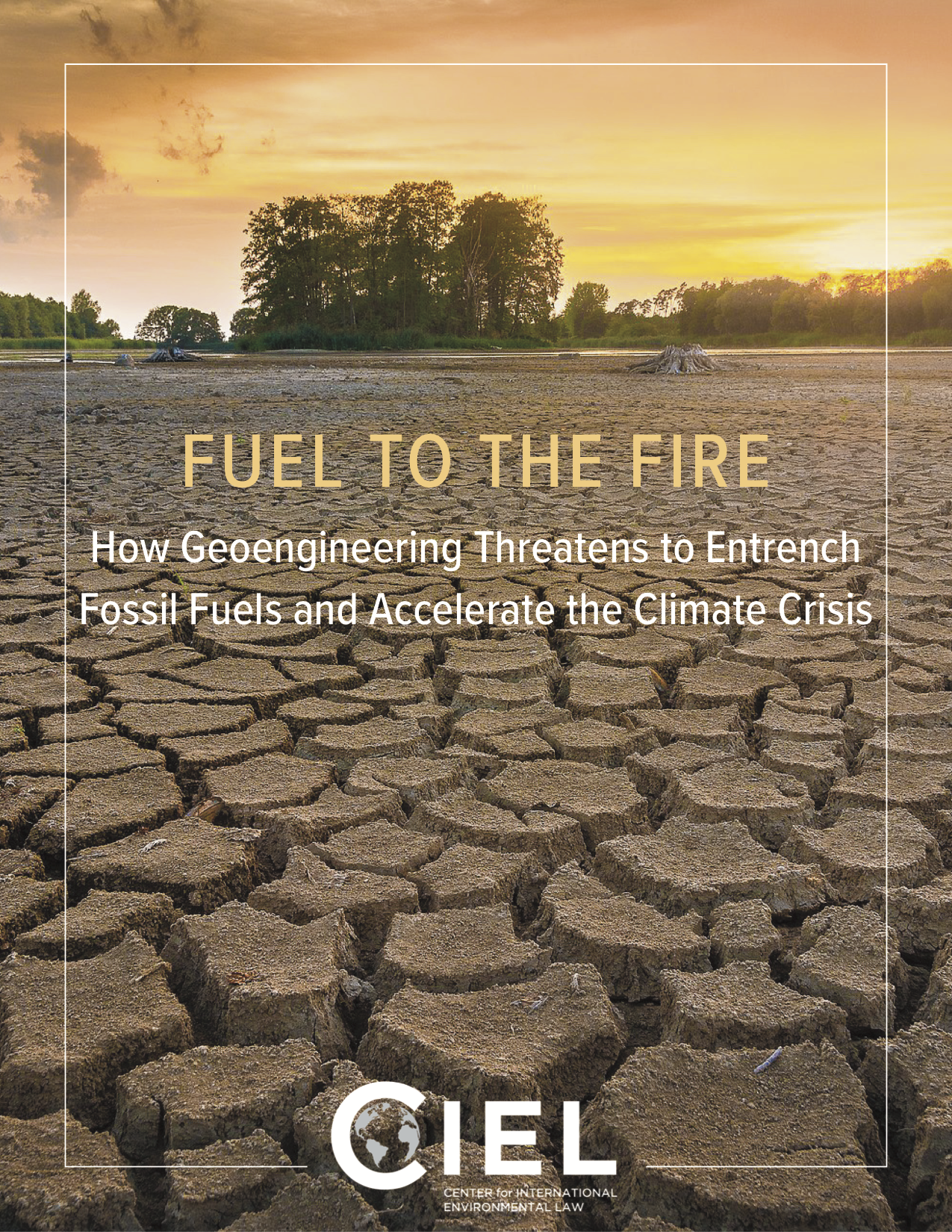| SHARE: | ||
Dear Jon,
As global temperature rise continues to alter our natural environment with devastating impacts for humanity and biodiversity, the need for urgent action is increasingly clear. But as the climate crisis intensifies, once far-fetched “solutions” are finding their way dangerously closer to the mainstream.
Grouped together under the name of “geoengineering,” a variety of earth-altering techniques promise to serve as a “Hail Mary” pass for the health of our planet. From pulling carbon dioxide out of the air, to altering how the sun’s rays reach the earth, these technologies attempt to minimize the effects of climate change after carbon dioxide has already been emitted, instead of stopping those emissions in the first place. Geoengineering offers the alluring (and false) promise that we can continue to rely on fossil fuels while somehow avoiding the catastrophic climate impacts of a fossil economy. Unsurprisingly, fossil fuel companies have been among the most active backers of geoengineering because it allows them to keep pumping more oil, burning more coal, and reaping the profits. For fossil fuel companies, that’s precisely the appeal of geoengineering: the promise and the myth that we can continue business as usual. In reality, these technologies further entrench the fossil fuel industry’s hold on our energy systems, while doing nothing to address the causes of the climate crisis. For example, a process called direct air capture would suck carbon dioxide directly from the air by installing what amounts to huge air filters all around the planet. But it takes a lot of energy to do so (and not necessarily renewable energy). And where does the “recovered” carbon go afterward? Most likely into new diesel and jet fuels, or pumped into the ground to produce more oil, which would then be burned and re-emitted in a continuous loop of expanding carbon emissions. In other words, fossil fuel companies have found yet another way to profit off of climate destruction. What's more, geoengineering technologies could create entirely new threats for human rights and the environment. For example, a technique called solar radiation modification would block the sun’s rays or reflect them back into space, before they have a chance to warm our atmosphere. Yet the technologies to do so also create profound risks that will threaten human health, food security, and the environment across large regions, like acid rain, ozone depletion, and massive changes to rainfall patterns. The growing urgency of the climate crisis is forcing difficult choices and difficult conversations even among committed climate advocates. The window for avoiding catastrophic climate change is small and closing rapidly. While advocates argue that geoengineering technologies could serve as an insurance policy in case we push ourselves past the point of no return, it could serve to ensure just that: Holding onto the promise of an unproven, possibly disastrous technology could weaken the political will to stop climate change. We cannotstand by and cross our fingers for technological fixes that could create new environmental challenges and make the transition to a low-carbon economy more difficult. But most importantly, we don’t need to. The world already has the tools we need to solve the climate crisis. We can promote renewable energy and energy efficiency, protect and restore natural forests and ocean ecosystems, and respect the rights of indigenous peoples to protect the lands they safeguard. All of these are workable, cost-effective solutions to the climate crisis that we can use right now. The problem is not one of technology, but one of political will. We know how to solve the climate crisis. Geoengineering is not that solution. To learn more, read CIEL’s new report Fuel to the Fire: How Geoengineering Threatens to Entrench Fossil Fuels and Accelerate the Climate Crisis. Sincerely,  Carroll Muffett President Center for International Environmental Law (CIEL) 
Center for International Environmental Law
1101 15th Street NW, Suite 1100, Washington DC, 20005 Phone: (202) 785-8700 | Fax: (202) 785-8701 | info@ciel.org
Join the conversation online!
Got this as a forwarded email? Learn more by signing up to our monthly newsletter.
|
Fuel to the Fire: How Geoengineering Threatens to Entrench Fossil Fuels and Accelerate the Climate Crisis
Posted by Focus on Arts and Ecology on
- -
Posted in
Climate and Climate Action,
Ecology














Đăng nhận xét